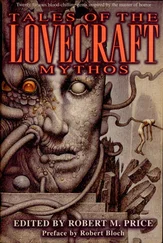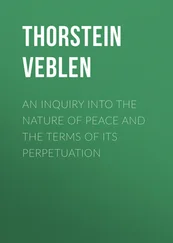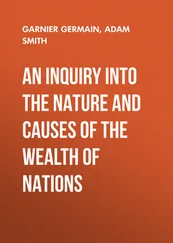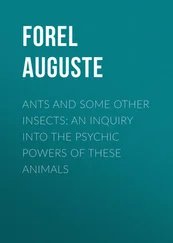Robert Pirsig - Lila. An Inquiry Into Morals
Здесь есть возможность читать онлайн «Robert Pirsig - Lila. An Inquiry Into Morals» весь текст электронной книги совершенно бесплатно (целиком полную версию без сокращений). В некоторых случаях можно слушать аудио, скачать через торрент в формате fb2 и присутствует краткое содержание. Жанр: Современная проза, на английском языке. Описание произведения, (предисловие) а так же отзывы посетителей доступны на портале библиотеки ЛибКат.
- Название:Lila. An Inquiry Into Morals
- Автор:
- Жанр:
- Год:неизвестен
- ISBN:нет данных
- Рейтинг книги:3 / 5. Голосов: 1
-
Избранное:Добавить в избранное
- Отзывы:
-
Ваша оценка:
- 60
- 1
- 2
- 3
- 4
- 5
Lila. An Inquiry Into Morals: краткое содержание, описание и аннотация
Предлагаем к чтению аннотацию, описание, краткое содержание или предисловие (зависит от того, что написал сам автор книги «Lila. An Inquiry Into Morals»). Если вы не нашли необходимую информацию о книге — напишите в комментариях, мы постараемся отыскать её.
Lila. An Inquiry Into Morals — читать онлайн бесплатно полную книгу (весь текст) целиком
Ниже представлен текст книги, разбитый по страницам. Система сохранения места последней прочитанной страницы, позволяет с удобством читать онлайн бесплатно книгу «Lila. An Inquiry Into Morals», без необходимости каждый раз заново искать на чём Вы остановились. Поставьте закладку, и сможете в любой момент перейти на страницу, на которой закончили чтение.
Интервал:
Закладка:
When a society is not itself threatened, as in the execution of individual criminals, the issue becomes more complex. In the case of treason or insurrection or war a criminal’s threat to a society can be very real.
But if an established social structure is not seriously threatened by a criminal, then an evolutionary morality would argue that there is no moral justification for killing him.
What makes killing him immoral is that a criminal is not just a biological organism. He is not even just a defective unit of society. Whenever you kill a human being you are killing a source of thought too. A human being is a collection of ideas, and these ideas take moral precedence over a society. Ideas are patterns of value. They are at a higher level of evolution than social patterns of value. Just as it is more moral for a doctor to kill a germ than a patient, so it is more moral for an idea to kill a society than it is for a society to kill an idea.
And beyond that is an even more compelling reason: societies and thoughts and principles themselves are no more than sets of static patterns. These patterns can’t by themselves perceive or adjust to Dynamic Quality. Only a living being can do that. The strongest moral argument against capital punishment is that it weakens a society’s Dynamic capability — its capability for change and evolution. It’s not the nice guys who bring about real social change. Nice guys look nice because they’re conforming. It’s the bad guys, who only look nice a hundred years later, that are the real Dynamic force in social evolution. That was the real moral lesson of the brujo in Zuni. If those priests had killed him they would have done great harm to their society’s ability to grow and change.
It was tempting to take all the moral conflicts of the world and, one by one, see how they fit this kind of analysis, but Phædrus realized that if he started to get into that he would never finish. Wherever he looked, whatever examples came to mind, he always seemed to be able to lay them out within this framework, and the nature of the conflicts usually seemed to be clearer when he did so.
And as a matter of fact that looked like the answer to Rigel’s question that had been bugging him all day: Does Lila have Quality?
Biologically she does, socially she doesn’t. Obviously! Evolutionary morality just splits that whole question open like a watermelon. Since biological and social patterns have almost nothing to do with each other, Lila does and Lila does not have quality at the same time. That’s exactly the feeling she gave too — a sort of mixed feeling of quality and no quality at the same time. That was the reason.
How simple it was. That’s the mark of a high-quality theory. It doesn’t just answer the question in some complex round-about way. It dissolves the question, so you wonder why you ever asked it.
Biologically she’s fine, socially she’s pretty far down the scale, intellectually she’s nowhere. But Dynamically… Ah! That’s the one to watch. There’s something ferociously Dynamic going on with her. All that aggression, that tough talk, those strange bewildered blue eyes. Like sitting next to a hill that’s rumbling and letting off steam here and there… It would be interesting to talk to her more.
He stepped forward to the hatchway and looked down. It looked as though she was sleeping on the bunk down there. He could use some of that himself. Tonight she’d probably be wide awake and raring to go. He’d be all zonked out.
Phædrus saw that an approaching buoy was slanting slightly toward him and that at its base was a little wake from a current running against him. The river was flowing backward now and it would be slow going. It would be dark soon too, but fortunately they didn’t have far to go.
The position of a barge up ahead indicated his boat was getting too far over on the New York City side of the river. He brought his bow back a few degrees so as to stay out of any oncoming traffic. On the big expanse of water before him he saw a barge being pushed from behind by a tug-boat. The barge had pipes along the top that meant it was probably carrying oil or chemicals. It was heading toward him and although he figured there was no danger of collision he set a course anyway that would give it an even wider separation.
The banks of this sea were far away but he could see that the buildings and shore installations were metropolitan. No hills rose back of them, only a dull industrial haze. He looked at his watch. Three-thirty. A couple of hours of sunlight yet. It looked like they would get to Nyack before dark. This boat had really made time today. All the hurricane flood water on top of the tides on top of the natural river current had done it.
Anyway that was the answer to Rigel’s question. Phædrus could relax now. Rigel was just pushing a narrow tradition-bound socio-biological code of morals which it was certain he didn’t understand himself.
As Phædrus had gotten into them he had seen that the isolation of these static moral codes was important. They were really little moral empires all their own, as separate from one another as the static levels whose conflicts they resolved:
First, there were moral codes that established the supremacy of biological life over inanimate nature. Second, there were moral codes that established the supremacy of the social order over biological life — conventional morals — proscriptions against drugs, murder, adultery, theft and the like. Third, there were moral codes that established the supremacy of the intellectual order over the social order — democracy, trial by jury, freedom of speech, freedom of the press. Finally there’s a fourth Dynamic morality which isn’t a code. He supposed you could call it a code of Art or something like that, but art is usually thought of as such a frill that that title undercuts its importance. The morality of the brujo in Zuni — that was Dynamic morality.
What was emerging was that the static patterns that hold one level of organization together are often the same patterns that another level of organization must fight to maintain its own existence. Morality is not a simple set of rules. It’s a very complex struggle of conflicting patterns of values. This conflict is the residue of evolution. As new patterns evolve they come into conflict with old ones. Each stage of evolution creates in its wake a wash of problems.
It’s out of this struggle between conflicting static patterns that the concepts of good and evil arise. Thus, the evil of disease which the doctor is absolutely morally committed to stop is not an evil at all within the germ’s lower static pattern of morality. The germ is making a moral effort to stave off its own destruction by lower-level inorganic forces of evil.
Phædrus thought that most other quarrels in values can be traced to evolutionary causes and that this tracing can sometimes provide both a rational basis for classification of the quarrels and a rational solution. The structuring of morality into evolutionary levels suddenly gives shape to all kinds of blurred and confused moral ideas that are floating around in our present cultural heritage. Vice is an example. In an evolutionary morality the meaning of vice is quite clear. Vice is a conflict between biological quality and social quality. Things like sex and booze and drugs and tobacco have a high biological quality, that is, they feel good, but are harmful for social reasons. They take all your money. They break up your family. They threaten the stability of the community.
Like the stuff Rigel was throwing at him this morning, the old Victorian morality. That was entirely within that one code — the social code. Phædrus thought that code was good enough as far as it went, but it really didn’t go anywhere. It didn’t know its origins and it didn’t know its own destinations, and not knowing them it had to be exactly what it was: hopelessly static, hopelessly stupid, a form of evil in itself.
Читать дальшеИнтервал:
Закладка:
Похожие книги на «Lila. An Inquiry Into Morals»
Представляем Вашему вниманию похожие книги на «Lila. An Inquiry Into Morals» списком для выбора. Мы отобрали схожую по названию и смыслу литературу в надежде предоставить читателям больше вариантов отыскать новые, интересные, ещё непрочитанные произведения.
Обсуждение, отзывы о книге «Lila. An Inquiry Into Morals» и просто собственные мнения читателей. Оставьте ваши комментарии, напишите, что Вы думаете о произведении, его смысле или главных героях. Укажите что конкретно понравилось, а что нет, и почему Вы так считаете.











